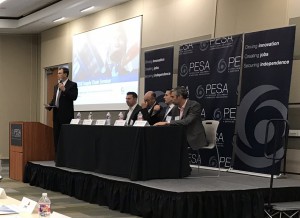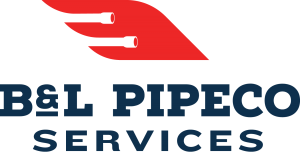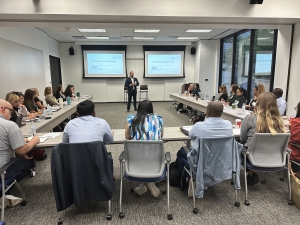 The 2018 PESA Supply Chain Seminar included key operators who addressed accomplishments achieved with service and supply sector partners during the downturn and leveraging supply chain efficiencies. Supply Chain Committee Chairman Brad Wise, Vice President, Marketing, DistributionNOW, moderated the seminar held February 22 at Baker Hughes, a GE company.
The 2018 PESA Supply Chain Seminar included key operators who addressed accomplishments achieved with service and supply sector partners during the downturn and leveraging supply chain efficiencies. Supply Chain Committee Chairman Brad Wise, Vice President, Marketing, DistributionNOW, moderated the seminar held February 22 at Baker Hughes, a GE company.
Jud Bailey, CFA, Senior Equity Analyst, Wells Fargo, opened with a market outlook and trends for service, supply and manufacturing companies to focus on.
“There will be a broad reinflation across the market,“ Bailey said. “We forecast an increase in global drilling and completion spend in 2018, driven by an increase in U.S. lower 48 spend, possibly close to 20%.” In the U.S., Bailey predicts service cost inflation will be offset by efficiencies, and that E&Ps that are focused on returns are more likely to partner with innovative, efficient service companies. Internationally, land spending will modestly recover with the most growth occurring in the Middle East.
Bailey also specifically addressed the offshore market, “The near-medium term offshore outlook still presents challenges, however spend could get back to 2006-2007 levels. Massive cost deflation and innovation should ultimately lead to some recovery in 2019-2020.”
Scott McKaig, Director – Technical Sourcing, Transocean, focused on the importance of aligning operator drivers with supplier drivers.
“We need to discuss scope of the project first before we talk about price and costs,” McKaig said. He highlighted the importance of moving beyond competitive bidding and negotiation, focusing more on balancing business objectives. He also commented on the challenges that accompany deploying such a strategy.
“Although there can be some resistance internally around this model, we must partner with our vendors to gain consistency. Transparency between companies has to exist for us to be efficient,” he said.
He concluded by sharing examples of business model innovation which have been successful within his organization. One of these examples is driving alignment through performance-based service agreements, which not only sets out to maximize productivity and lower operating costs for Transocean, but also provides customer partnership development. “Once we have the buy-in from the vendors, we can adopt simple concepts that benefit both parties,” McKaig said.
BP’s Pedro Rodriguez, Director of Strategic Relationships for Well Operations, provided insight on how BP has created value by building trust between his organization and its service providers. He explained that listening to and interfacing strategically with their suppliers has helped to improve efficiencies.
He noted that once basic standards and operations are in place, they can work in conjunction with their suppliers to create new sources of value directly impacting the business. “We have become stronger aligning with our suppliers’ expertise. We cannot do this alone,” he said.
BP’s strategic suppliers model helps to keep both BP and their suppliers performances aligned. Identifying continuous improvement opportunities and agreeing on areas of cooperation has proven to drive efficiencies.
“We depend on continuous collaboration to drive sustainable efficiencies, so inefficiencies don’t return,” Rodriguez said.
Alan Killion, Vice President, E&P Services, WPX Energy, provided insight into how WPX’s supply chain management team has helped to streamline operations. This team, developed in 2015, was assembled to provide a process for strategically managing high-spend categories, partner with operations groups, optimize inventory and centralize contract management. Killion defined supply chain as a service organization that can help lift burdens from some vendor management activities and as an adviser that makes recommendations for supplier sourcing alternatives.
Killion also shared views on collaboration.
“Building a strong partnership helps everyone understand the scope of operations, which is vital,” he said. Working in concert with, and having line of sight and visibility into, the supplier’s cost structures allowed WPX to unbundle their services across various categories. As a result of the switch to direct sourcing, costs have been optimized and provides the ability to source demand in the future.
Killion discussed operation constraints yielding opportunities. For example, in the frac space, once constraints are identified across each service entity – mines, rail, trucking, storage – solutions can also be identified and addressed independently.
All of the speakers participated in a panel discussion, giving the opportunity for continued discussion with attendees. Building relationships, sustaining alignment and promoting transparency were themes each panelist discussed and will continue to focus on with their suppliers.
“We don’t want vendors, we want partners we can grow with,” Killion said.
PESA would like to thank seminar sponsors Baker Hughes, a GE company, B&L Pipeco Services and PwC.
 |
 |
 |
RESOURCES
Download Presentations




